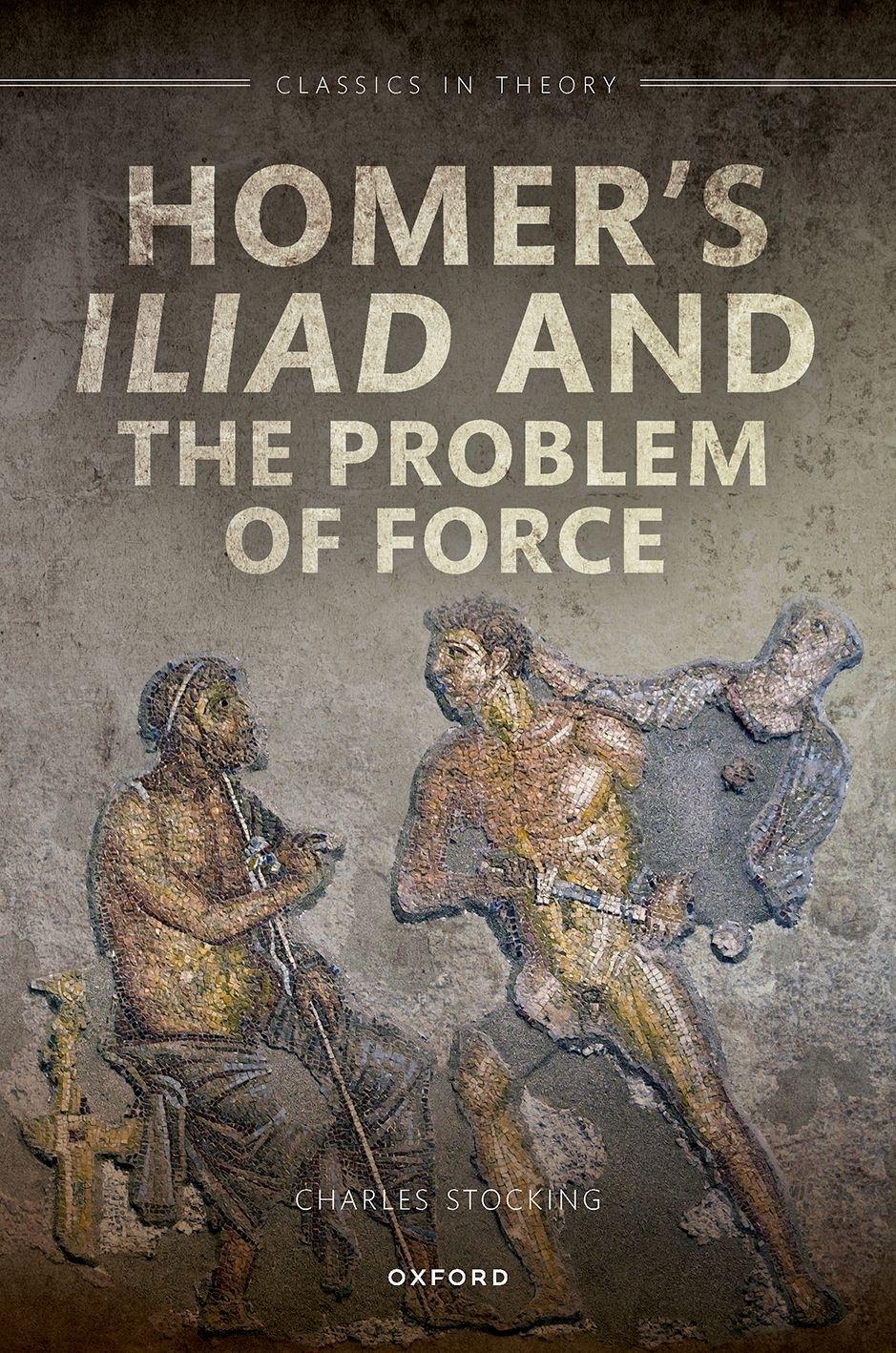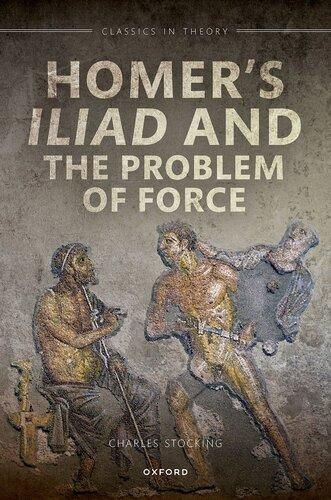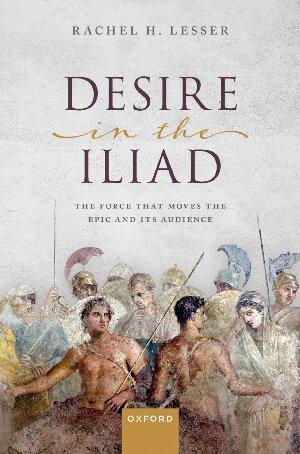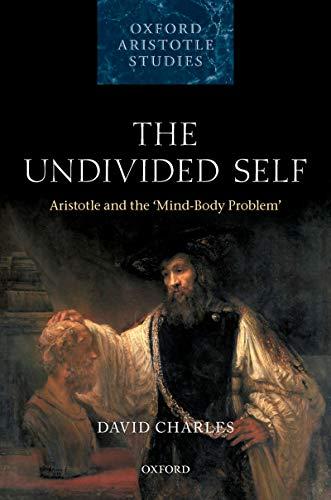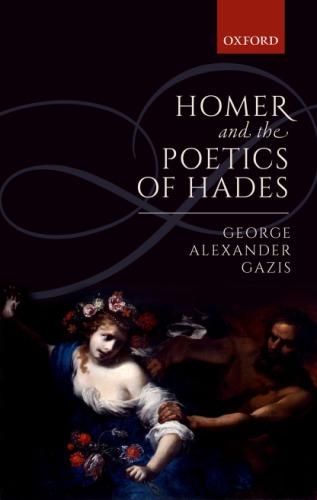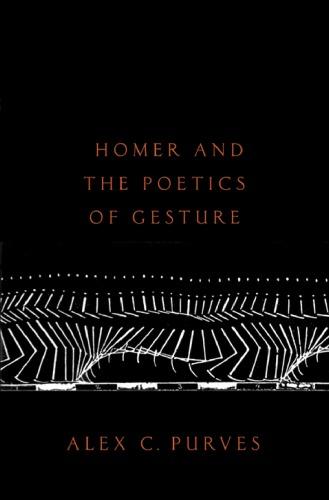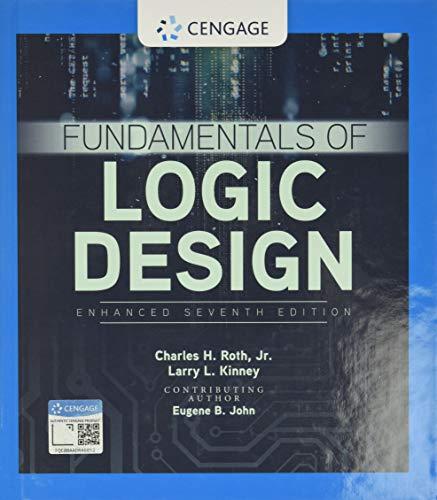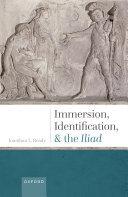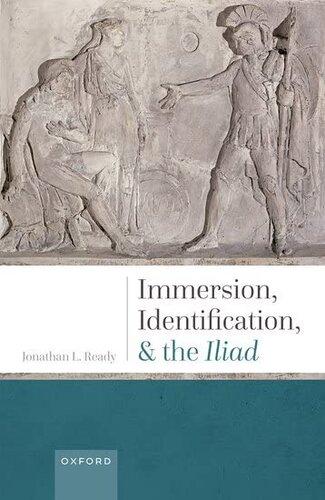Homer’s Iliadand the Problem of Force
Charles H. Stocking
Great Clarendon Street, Oxford, OX2 6DP, United Kingdom
Oxford University Press is a department of the University of Oxford. It furthers the University’s objective of excellence in research, scholarship, and education by publishing worldwide. Oxford is a registered trade mark of Oxford University Press in the UK and in certain other countries
© Charles H. Stocking 2023
The moral rights of the author have been asserted
All rights reserved. No part of this publication may be reproduced, stored in a retrieval system, or transmitted, in any form or by any means, without the prior permission in writing of Oxford University Press, or as expressly permitted by law, by licence or under terms agreed with the appropriate reprographics rights organization. Enquiries concerning reproduction outside the scope of the above should be sent to the Rights Department, Oxford University Press, at the address above
You must not circulate this work in any other form and you must impose this same condition on any acquirer
Published in the United States of America by Oxford University Press
198 Madison Avenue, New York, NY 10016, United States of America
British Library Cataloguing in Publication Data
Data available
Library of Congress Control Number: 2022948860
ISBN 978–0–19–286287–7
ebook ISBN 978–0–19–267742–6
DOI: 10.1093/oso/9780192862877.001.0001
Printed and bound in the UK by TJ Books Limited
Links to third party websites are provided by Oxford in good faith and for information only. Oxford disclaims any responsibility for the materials contained in any third party website referenced in this work.
Acknowledgments
Special thanks are owed to a great number of people for their support in bringing this work to completion. I am especially grateful to the editors Miriam Leonard, Tim Whitmarsh, and Brooke Holmes for their constant support and for their efforts in general with the truly unique series Classics in Theory. I am also extremely grateful to the reviewers, who were challenging but ultimately made the book better. Chapter 4 was a direct result of their influence. Greatest thanks are owed to Cléo Carastro for inviting me to present the earliest stages of this work at the École des hautes études en sciences sociales in Paris over a series of lectures in the spring of 2019. It was in that lecture series that the book first took shape. The audience members of the EHESS and ANHIMA, including Manon Brouillet, Paulin Ismard, Vincent Azoulay, and Stella Geourgoudi, among others, provided excellent feedback and criticism. I am especially grateful to Pierre Judet de la Combe, Pietro Pucci, and Claude Calame, who were extremely generous with their time and expertise during my stay. And I received tremendous support from my colleagues at Western, Aara Suksi and Lawrence De Looze, who attended every one of my talks in Paris and continued to provide great feedback afterwards. Chapter 2 was presented at Cambridge University, and Renaud Gagné and Simon Goldhill offered excellent points of critique and valuable feedback. Sections of this book were also presented at my home institution, Western University, as well as at the University of Toronto, the University of Chicago, and for the Political Theory workshop at UCLA. The responses of friends and colleagues at each of these institutions made the manuscript better. A section of this book was presented in a panel for the Society of Classical Studies 2020 Annual Meeting titled “Foucault and Antiquity, beyond Sexuality.” Thanks to the panel members, Marcus Folch,
Miriam Leonard, Brooke Holmes, and Allen Miller, and to the audience of the SCS, who provided a lively and memorable discussion. I owe the deepest debt to Allen Miller in particular, who has long been a mentor and role model for thinking seriously about antiquity and its impact on the “history of the present.” Thanks also to Richard Martin, Chris Faraone, Kendall Sharpe, and Jim Porter, who read and commented on sections of the book all for the better. Thanks also to Joseph Leivdal, who helped prepare and edit major sections of the appendix. Lastly, I would like to thank my family. My brother Damian Stocking not only taught me ancient Greek, but in many ways, this book is a continuation of his own dissertation on Homeric ontology. And above all, I am deeply grateful to my wife, Catherine Pratt. It was during the writing of this book that our daughter Stella was born, and she has been the most beautiful reminder there are forces in this world beyond our own will and agency.
Contents
Introduction: The Homeric Problem of Force, between Philology and Philosophy
Homer and the Philosophy of Force, between Language and the Subject
Homer and the Philology of Force, between the Human and Divine
1. “Stronger”: Performative Speech and the Force of Achilles
The Homeric Scepter: Speech and the Source of Authority
A Performative Intervention: Nestor’s Scale of Superiority in Iliad1
Force, Speech, and the Genealogy of Achilles
The Force of Zeus and Its Performative Limits
Conclusion
2. Kratosbefore Democracy: Force, Politics, and Signification in the Iliad
Towards a Political Theology of Force in Homer and Hesiod
The Alterity of Kratos: Philological and Mythopoetic Interventions
Misinterpreting Kratos: Zeus’ Deception of Agamemnon
Reinterpreting Kratos: Diomedes’ Rebuke
Conclusion
3. Force and Discourse in the Funeral Games of Patroclus
The Problem of Force in the Funeral Games: Nestor’s Advice to Antilochus
Foucault and the Funeral Games: Menelaus’ Quarrel with Antilochus
Reversals in the “Regime of Truth”: Eumelus and Ajax
Resolution through Discourse: Achilles’ Interventions and the End of the Agōn
Conclusion
4. The “Force that Kills”: Simone Weil and the Problem of Agency in the Iliad
Simone Weil on Force and the Subject in Homer and History Subjects of Force in the Iliad
Force, Fate, and Death: Sarpedon, Patroclus, and Hector
Conclusion: Achilles’ Awareness
Conclusion: Homeric Forces and Human Subjects Reconsidered
Appendix:ForceinEarlyGreekHexameter
Kratos, Alkē, Biē, Menos, Sthenos, (W)is, Dynamis, Damazō/damnēmi
References IndexLocorum Index
Introduction
The Homeric Problem of Force, between Philology and Philosophy
The idea of “force” has taken on an all-pervasive significance in Homeric poetry ever since Simone Weil proclaimed it as such in her famous essay “L’Iliadeou le poème de la force.”1 According to Weil, force is uniform in character, a universal process with profound implications for human existence. Weil explains:
Force is that which makes a thing of whoever submits to it. Exercised to the extreme, it makes the human being a thing quite literally, that is, a dead body. Someone was there and, the next moment, no one.
(Weil 2003: 45)
Much of her essay goes on to describe the many ways in which the Iliad gives expression to this impersonal and depersonalizing process. For Weil, and for so many readers of the Iliad after her, Homeric poetry stands as a transhistorical monument to the singularity of force, which transforms the human subject into an object.2
Soon after Simone Weil’s essay was first published, however, the Classical scholar Bruno Snell published an equally influential and controversial work, Die Entdeckung des Geistes, in which Snell observed not one, but multiple forms of force in Homeric poetry.3 He states:
Mental and spiritual acts are due to the impact of external factors, and man is the open target of a great many forces which impinge on him and penetrate his very core. That is the reason why Homer has so much to say about forces, why, in fact, he has so many words for our term “force” [kraft]: menos, sthenos, bie, kikus, is, kratos, alkē, dynamis. The meaning of each of these words is precise, concrete, and full of implications; so far from serving as abstract symbols of force…Homer’s words refer to specific functions and particular provinces of experience.
(Snell, 1953: 20)
Like Weil, Snell observed force in Homer as that which is external to the human and acts upon him or her. But unlike Weil, Snell gives more attention to linguistic expression in order to argue for multiple forms of force at work in Homeric poetry. At first glance, Snell’s observation suggests a method based in a basic principle of “linguistic relativity” wherein culture affects thought and experience of the world by means of language.4 Yet Snell employs a distinctly German version of linguistic relativity based on an evolutionary model of culture, wherein human thought and perception are believed to have moved from primitivism to enlightenment.5 Snell’s observation on the plurality of forces parallels his other observations on the plurality of sight and cognition.6 All such pluralities, in Snell’s view, are symptomatic of a “primitive” form of “senseconsciousness” which is not yet capable of unifying, “self-conscious” thought.7 The plurality of forces, in other words, plays a critical role in Snell’s overall argument that “Homeric man” is incapable of understanding himself as a single, unified individual, neither in body nor in mind.8
Thus between Simone Weil and Bruno Snell, two highly influential and controversial figures, we are presented with a basic problem of interpretation that every reader of Homer must face: Is “force” in Homer to be understood in the singular or plural? Is it a universal and transhistorical process or one that is linguistically and culturally determined? As the arguments of Weil and Snell have already indicated, this seemingly simple question on the meaning of “force”
in Homer is ultimately inseparable from the much larger problem of what it means to be a human subject, both for the ancient Greeks and for us.
Despite the large implications in this basic interpretive problem, the topic of force in Homer is often assumed and seldom analyzed directly by Classical scholars. The first to directly address the topic since Weil and Snell was the linguist Émile Benveniste. In his foundational work, Levocabulairedesinstitutionsindo-européennes, first published in 1969, Benveniste states the following under the heading of kratos:
The translation [of kratos] which is everywhere accepted as “force” is in our view unsatisfactory…That kratos cannot simply signify “force” emerges from the fact that at least six other Homeric terms have this sense: bia, is, iskhus, sthenos, alkē, dynamis. This profusion creates many difficulties for translators. But the choice of equivalents can only be guided by exact definitions, that is, an exact idea of the differencesbetween these seven ways of designating “force.”
(Benveniste 2016: 362, italics in original)9
On one level, Benveniste’s linguistic approach to kratos parallels Snell’s observation on the plurality of forces in Homer. Both acknowledge the fact of multiple terms as a significant indication that each term presents a different meaning and aspect to the idea of force. Yet Benveniste differs from Snell in his ultimate objectives and methodological presuppositions. Snell, working out of the German philosophical tradition, is concerned with the development of the autonomous and self-conscious individual, whereas Benveniste, following in the French sociological tradition, is more interested in how language contributes to the construction of political ideologies and social institutions.10 For Snell, force in Homer is a starting point for explaining the modern human subject in isolation qua individual. For Benveniste, it is an endpoint for analyzing the human subject in relation to early Greek society and its prehistory. Furthermore, Benveniste’s approach is understandably more linguistic, based on a principle known as the “semantic set” or
“lexical field,” wherein synonyms retain differences in meaning by virtue of the fact that they are grouped together under a single broad category.11 Hence, Benveniste does not use the fact of a plurality of terms for force as a symptom of “primitive thought” in the same manner as Snell. Rather, his approach implies that such plurality is in fact a regular feature of all language use, while the plurality of “forces” in Homer is more specifically indicative of complex social and political thought in Greek prehistory.
Benveniste serves as an important starting point for revisiting the question of force in Homer from a more philological perspective. And yet Benveniste himself did not actually offer a comprehensive account of the seven different terms for force he outlines, having dealt in detail only with kratos. Since Benveniste’s work, several scholars have treated terms for force in Homer on a case-by-case basis. Gregory Nagy’s Best of the Achaeans remains the most extensive discussion thus far on various terms for force in Homer, with a primary focus on their oral-poetic implications.12 In Immortal Armor, Derek Collins offers an in-depth study of alkēin Homer, and Michael Clarke offers various expositions of terms for embodiment, especially menos.13 Gregory Nagy and Egbert Bakker also discuss in detail the semantics and etymological significance of menos in Homer.14 Furthermore, one might expect that the entries in the Lexikon des frühgriechischen Epos, originally directed by Snell, would serve as an occasion to distinguish between these different Homeric force terms. Yet the entries for each of the force terms in the lexicon are never treated as the semantic set originally proposed by Snell.15 While each of these studies has made vital contributions, thus far no work has taken up a comprehensive view of Homeric force.
This book, Homer’s Iliad and the Problem of Force, therefore offers the first full-scale treatment of the topic of force in Homer, with a view to the distinct interactions between philology and philosophy. In terms of philology, this work confirms that each word for force does indeed present a fairly distinct sphere of usage.16 In particular, one will find that each term implies a different mode of
force, defined by different relationships between self and other, where the category of “other” includes humans, gods, ancestors, animals, and other nonhuman meta-persons. Furthermore, as we shall see, these relations are primarily conceptualized as objects of exchange in a more general embodied economy shared between the human and nonhuman. As such, from a more philosophic perspective, the philology of force has significant implications for Homeric subjectivity. Rather than treat force strictly as a negation of the self, in Weil’s sense, or as an indication of the deficiency of awareness of the self in Snell’s view, the study of force presented here serves as a further occasion for rethinking the Homeric self beyond the unitary subject.
When analyzed in light of the topic of force, the Homeric subject appears to be founded on a double layer of contingency. On the one hand, there are several ways in which the concept of force is shown to be a defining feature of the Homeric warrior’s subjective identity.17 On the other hand, no form of force is understood to be an attribute of the person as individual. Instead, different types of force in Homer are presented as coming from outside the person, primarily given from the gods. Thus, the various terms for force in Homer serve as points of relation that operate from both inside and outside of the human subject. If we take this internal/external relationality of Homeric force at face value then the vocabulary of force presents an entirely different kind of subjectivity, compared with the models of Weil, Snell, and others. That is to say, Homeric subjectivity is founded on a principle of interactive interdependence rather than independent autonomy. What Homeric subjectivity presents is an alternative to the ideology of the individual. In Homer, the forces that come to define oneself do not emanate strictly from one’s own will, intentions, or actions, but from gods and other nonhuman agents. And because the gods themselves are also in conflict, there is no single god, not even Zeus, who controls the operation of all forces for all humans at any given time.
As we shall see in the course of this book, the topic of force in its various Homeric forms becomes a means of expressing the very
limits of human agency and identity in the Iliad. In this regard, the inherent contingency and multiplicity of Homeric forces renders the very topic of force a problem of interpretation not just for modern scholars but also for characters within the poem itself. Weil, Snell, and Benveniste each had their own agenda in their discussion of Homeric force, and none was particularly interested in how the different types of Homeric force contributed to the overall narrative of the Iliad. But if we approach the Homeric vocabulary of force with regard to its poetic contexts, a distinct thematic pattern emerges. First and foremost, the majority of terms for force occur in speech rather than narrative. Such contexts introduce a striking and problematic feature of Homeric force—the very terms in the Iliad meant to designate different modes of embodied physicality and presence are often presented at one level removed from any type of purely material expression. One might assume that we would see force “in action,” but the enactment of what modern readers would consider “force” in Homer is seldom described as such in the poem.18 Instead, readers have access to the notion of force only indirectly, by way of the characters’ own interpretations. Even when the enactment of force appears in its most final and physical form, in the act of killing, the verbal expressions of “force” are invoked primarily by the speakers who praise and blame such acts. In this regard, the conceptualization of different types of force in Homer appears to play a more important role in the self-fashioning of speakers’ subjective identity through speech rather than in the objective action of the poem per se. Second, we can add to this fact an even more surprising trend concerning the problematic of force in the Iliad. On almost every occasion in which a speaker makes an appeal to a certain relation of force, that very claim is contradicted almost immediately by other speakers or by the narrative events of the poem. One is able to observe this contradiction in the claims to force expressed by nearly all characters, including Achilles. The narrative of the Iliad itself reflects different levels at which this contradiction plays out. The contradiction appears in the faulty assessment of the significance of Achilles’ force at the outset of the
poem by both Agamemnon and Nestor (Chapter 1). A similar contradiction occurs in reference to the false significance attributed to Agamemnon’s political force in the first half of the poem by Odysseus and others (Chapter 2). It further applies to the general assessment of each of the characters in their agonistic ability as an expression of social hierarchy or aretē in the funeral games of Patroclus (Chapter 3). And finally, it applies even to the false attributions of human agency in the act of killing itself in the Iliad (Chapter 4). Whenever a certain mode of force is invoked in the Iliad, one is thus able to observe a double action. On the one hand, nearly every utterance pertaining to force in the Iliadis used in the service of self-identification or in the characterization of others. On the other hand, every assertion of force in the Iliad presents the possibility of undoing those very identities.
Homer and the Philosophy of Force, between Language and the Subject
When taken together, the terms for force in Homer all point to a more general view on force and human subjectivity distinct from modern assumptions. As Bruno Snell observed early on:
We believe that a man advances from an earlier situation by an act of his own will, through his own power. If Homer, on the other hand, wants to explain the source of an increase in strength, he has no course but to say that the responsibility lies with a god.
(Snell 1953: 20)
And Snell further explains that Homeric forces are viewed as a “fitting donation from the gods.” (Snell 1953: 21). Simone Weil had also observed this fact but dismissed the Homeric perspective on the gods as a way to explain away the more general irrationality of force and war in which all humans participate (Weil 1955: 67). Through a
careful study of the Homeric vocabulary of force, however, one can observe that not all forms of force in Homer are conceptualized as “donations from the gods” in the manner asserted by Snell. Two specific terms, (w)is and dynamis, are not described as a gift from the gods.19 Thus, careful attention to the philology of force reveals that the Homeric view is in fact more complicated than Weil or Snell had believed. That humans can enact force of their own accord separate from the gods is feasible according to Homeric vocabulary, but that feasibility is largely understood only as a negative possibility. For the noun dynamis and the verb dynamai, which give expression to human potential, are predominantly expressed in the negative in the Iliad.20 In other words, the different relations of force do more than present a picture of force distinct from the modern notion of the self-determined individual. Rather, those terms in the Iliadactively problematize the status of humans by giving expression to the limits of agency as such.21
This problematization of human subjectivity and agency in the Iliadis further underscored by the fact that most terms for force are invoked in speech rather than narrative. That is to say, the problem of force and the human subject in the Iliad is inseparable from the problem of what it means to be a speakingsubject. Because speech turns out to be so critical for framing the very analysis of force and the Homeric subject, it is useful to return to the “linguistic turn” and to the problem of the relationship between language and the subject first inaugurated by the intellectual movement broadly known as “structuralism.”22 In recent years, scholars such as Miriam Leonard and Paul Allen Miller have called attention to the important role antiquity played for theorizing the subject from different perspectives within the structuralist tradition, especially in reference to Classical Greek genres of tragedy and philosophy.23 For the most part, the close connection between antiquity and structuralism is acknowledged to have developed out of a sustained engagement with these Classical genres. Yet Homeric and Hesiodic poetry have also played a significant role in structuralist thought.24 In fact, Homer’s Iliadhas factored directly into the works of Pierre Bourdieu,
Jacques Derrida, and Michel Foucault in important but largely unacknowledged ways. Thus, in Language and Symbolic Power, Pierre Bourdieu uses the case of the Homeric scepter in order to argue that the “illocutionary force” of speech acts does not come from speaking but from the objective conditions of power in which the speaker participates. In Rogues (2005), one of Derrida’s last major publications, Derrida quotes the “one king” speech of Odysseus from Iliad Book 2 in order to offer an account of political force, which in turn serves as the basis for his deconstruction of democracy. And finally, in a more recently published lecture series, Wrong-Doing, Truth Telling (2014), Michel Foucault offers an extensive analysis of the funeral games of Patroclus in order to explore how individuals are tied to hierarchical relations of “force” and “truth” which are exerted over them by others and by their own speech. For each of these figures, the topic of force in Homeric poetry plays a critical role in articulating the larger problem of language and the human subject in society. As I shall argue in the course of this book, these lesser-known engagements with Homer presented in the works of Bourdieu, Derrida, and Foucault will in fact prove useful for more fully appreciating the distinct types of force and their roles in the Iliad.
Of course, one could well argue that there is little need to invoke such thinkers for the sake of interpreting Homeric poetry because structuralism and its aftermath are now considered passé. But I believe there are at least three reasons why one should avoid such a dismissal. The first reason is supplied by Jacques Derrida himself. As early as 1967, when structuralism was still on the rise, Derrida anticipated its future fall and offered the following response in his essay “Force and Signification”:
If it recedes one day, leaving behind its works and signs on the shores of our civilization, the structuralist invasion might become a question for the historian of ideas, or perhaps even an object. But the historian would be deceived if he came to this pass: by the very act of considering the structuralist invasion as an object he would forget its meaning and would forget that what is at stake, first of all, is an
adventure of vision, a conversion of the way of putting questions to any object posed before us, to historical objects—his own—in particular.
(Derrida 1978: 1)
According to Derrida, to treat the intellectual movement of structuralism solely as a historical object is to dismiss the object of structuralism itself, namely the very process of signification. As Derrida goes on to state: “It is certain that the question of the sign is itself more or less, or in any event something other than a sign of the times.”25 In other words, to suggest that structuralism is passéis to suggest that the problem of meaning itself is passé. The problem of meaning and how it is produced, however, can never be irrelevant or unfashionable.
The second reason we should not dismiss these “structuralist” discussions of Homer out of hand is because Bourdieu, Derrida, and Foucault all present a deep engagement with the linguistic problem of force in the study of antiquity. Although ancient Greece is a wellacknowledged topos of French thought, none of the thinkers discussed here ever presented a particular proclivity towards Homeric poetry. In fact, their discussions of Homer are relegated almost entirely to the works mentioned above.26 Why then do all three figures discuss Homer specifically in light of the topic of force? On a general level, their engagements with Homeric force are certainly indebted to the popularity of Simone Weil’s essay. But at a more detailed level, the discussions of Homer by Bourdieu, Derrida, and Foucault all seem to be directly indebted to the work of two highly influential Indo-Europeanists, Émile Benveniste and George Dumézil. Bourdieu’s discussion of the Homeric scepter and his more general discussion of the function of persuasion is a direct result of Benveniste’s study of sovereignty and obedience from his work on Indo-European language and society. Likewise, Derrida’s discussion of kratosand politics in Rogues as well as in his last major seminar, The Beast and the Sovereign, also relies heavily on Benveniste’s etymologies from his Indo-European dictionary. And finally, Michel Foucault cites George Dumézil on a number of occasions as a major
source for his inquiry into the relationship between power and truth, beginning with Homer and Hesiod. Hence, the structuralist problem of force, language, and the subject appears to be largely founded on the linguistic prehistory of ancient Greece itself.
Such an intimate interaction between continental philosophy and Classical philology would indeed seem strange to anglophone audiences, especially in North America. As Allen Miller has commented:
The kind of profound classical culture that makes a figure like the great comparative Indo-Europeanist scholar George Dumézil easily cited and appreciated by figures as diverse as Foucault, Derrida, and Kristeva is simply not available to most Anglophone scholars. The notion of Jonathan Culler, Richard Rorty, or Hillis Miller having the same easy familiarity with the works of such American Indo-Europeanists as Calvert Watkins or Jaan Puhvel is all but inconceivable. Consequently, an entire idiom of thought, which these French thinkers simply assume, often remains opaque even to their most ardent enthusiasts.
(Miller 2007: 4)
By taking up the problem of the meaning of force, which is common to Indo-Europeanists, Classical scholars, and continental philosophers, this book may therefore help gain access to that particular “idiom of thought” on force and the subject within structuralist discourse, the “roots” of which have hitherto gone unappreciated.
Lastly, it should be noted that taking up structuralist thinkers’ use of Homer on force is not the same as a structuralist reading of Homeric force. Indeed, one of the greatest problems in the reception of structuralist thought more generally is the confusion between theory and method.27 Such confusion stems in large part from the popularity of Claude Lévi-Strauss’s appropriation of linguistic structuralism in order to develop what he considered to be a universal method of analysis.28 One should certainly be wary of any universalizing will-to-system that would reduce to a single mathematical formula a vast array of different materials, from
Oedipus to the Zuni emergence myth.29 Indeed, if there is any unity to structuralist thought in postwar France, it might be best summarized by Foucault, when he was asked to define himself as a “poststructuralist.” Foucault denied the category of “poststructuralism” and responded as follows:
Behind what was known as structuralism, there was a certain problem—broadly speaking, that of the subject and the recasting of the subject. [Yet I] do not see what kind of problem is common to those referred to the people we call “postmodern” or “poststructuralist.”
(Foucault 1998: 448)
As we have seen from the earlier arguments of Weil, Snell, and Benveniste, the question of Homeric force centers precisely on the problem of the subject, and it is for this reason as well that Bourdieu, Derrida, and Foucault also take up the question of force in Homeric poetry. As will be made clear in the following chapters, the work of each is in many respects an extension of the projects initiated by Weil, Snell, and Benveniste.30 Because Bourdieu, Derrida, and Foucault take up different approaches to the problem of Homeric force, each treatment opens up new avenues of inquiry into the study of Homeric poetry proper. Pierre Bourdieu offers an occasion for us to reconsider the relationship between force and the speaking subject in Homer. Jacques Derrida allows us to investigate more deeply the relationship between force and the political subject in the Iliad. And Michel Foucault invites us to rethink the relationship between force and truth in the Homeric agōn within the broader context of the relational human subject. Each of these thinkers’ engagement with Homeric force thus offer the opportunity to investigate and ultimately deconstruct the very idea of the human subject as a self-contained, autonomous individual within the realms of speech, politics, and competition more generally. This book therefore presents readings of Homeric poetry on force indialogue with these structuralist thinkers in order to address the much larger problem of subjectivity in the Homeric poems. As I
make clear, however, the treatments of Homer by Bourdieu, Derrida, and Foucault should by no means be adopted wholesale. Thus, each approach requires what I term “philological interventions” in their more philosophical treatments. Such interventions come about largely through a detailed study of the force terms in context using oral-poetic methods for analyzing Homeric poetry. When coming to terms with the meaning of each term related to “force,” basic methodology in lexical semantics requires that one take into account all occurrences of such terms. In Homer, however, those occurrences themselves are often found within formulaic contexts. Hence the semantics of lexical items in Homer are inseparable from more pragmatic questions regarding issues of formula and theme.31 And even though the origins of oral-formulaic analysis, beginning with Milman Parry, seemed to work against the ability of Homeric poetry to express unique modes of meaning, the most recent advances suggest that formulas provide the opportunity to generate even more meaning and nuance than would otherwise be possible.32 A more rigorous, oral-poetic approach to Homeric force will therefore supplement and improve upon the arguments proposed by Bourdieu, Derrida, and Foucault. And it thereby serves as a further occasion to revisit the early arguments of Weil and Snell.
Homer and the Philology of Force, between the Human and Divine
In order to fully explore the problem of force and the subject in Iliadic narrative, it is important to first detail the different terms and semantic roles of force, which were briefly mentioned but never fully developed by Snell and Benveniste. Each of the terms, their uses, and contexts are presented in full in the appendix and those results are summarized here.33 Kratos
According to both Snell and Benveniste, the central and most significant term for force in Homer is kratos, which conveys a basic meaning of “superiority.”34 As Benveniste noted, the term always implies a contest, where kratos is presented as the factor which ultimately accounts for the result of the contest. In this respect, the contrary of kratosmay be achosor “grief” within the epic tradition.35 Furthermore, kratos as superiority seems to operate as a central, organizing principle for other forms of force and may function as the basis for other comparative terms designating superior force.36 Furthermore, it is predominantly described as something given by the gods.37 It is Zeus who most often gives kratosbecause, as Zeus himself asserts, he has the most kratos of all the gods (Iliad 8.17). But because kratos is given and not understood as a permanent attribute of any single figure, human or divine, one should not confuse the notion of “superiority” with “sovereignty.” Instead, as I argue in Chapter 2, kratos encapsulates a notion of “agonistic alterity,” where the force of kratos requires supremacy over others and also must come from an other. Indeed, when kratos is invoked as a gift from the gods, most contexts ultimately emphasize the divine contingency of events turning out in a way contrary to human expectation.
Alkē
Another external notion of force is alkē, which may be understood as a type of “fighting force” specific to the contexts of defense and attack in battle.38 What makes alkēunique compared to other terms for force is its conceptualization as a type of outer layer which the warrior wears, reflected in its use with verbs such as “putting on” (duō) and “clothed in” (epiennumi).39 According to Derek Collins, it may therefore function as a type of “immortal armor” that further reflects a unique form of divine possession.40 At the same time, I would note that alkē is not entirely external to the human subject since it can be roused and suppressed specifically through mental
processes of remembering and forgetting respectively.41 Thus, alkē reflects the ways in which internally conceptualized human operations of thought interact with external factors established by the gods.
Menos
The externalized notions of kratos and alkē, however, may be contrasted with menos, which is better understood as a type of “life force” which animates the limbs, is associated with the living person (zōos), drives a human to action, and leaves the body upon death together with the psychē. It is especially related to embodied action.42 Unlike other terms, however, the force of menos may also be “breathed” into the warrior by a god, further underscoring its relationship to human vitality.43 But like alkē, it too has a mental component, reflected in its etymological root *men-.44 And yet, even though menos is more directly a feature of the internal aspects of the human body in Homer, nevertheless it too can be supplemented and increased by the intervention of the gods. Menosis given to one hero over another in order to explain the aristeia of a particular person in battle, as with Athena’s aid of Diomedes in Iliad Book 5 (Iliad 5.1–2, 125), the divine favor and intervention of the gods as the Trojans and Greeks battle (especially as it applies to Hector and Aeneas) (Iliad 15.59–60, 262; Iliad 20.79–80), and also when two humans compete who are favored by two different divinities, as seen in the chariot race of the funeral games of Patroclus (Iliad 23.390, 399–400).45 In sum, when menos is given to a human and enters their physical body, it is a reflection of the political intrigue among the gods and their contrasting desires in the Trojan war. Lastly, the operation of menos as a vital force in acts of war reflects an inherently tragic view of the Homeric warrior’s undertaking and the involvement of the gods.46 Thus, at the outset of the Iliad, Athena appears to stop the menos of Achilles when he is about to kill Agamemnon (Iliad1.207). And yet that cessation of menos, to save
the life of Agamemnon, will in turn precipitate the death of countless Greeks, including Patroclus and Achilles himself. Similarly, in the case of Hector, Zeus supplies Hector with additional menos in battle (Iliad 15.232) as well as kratos(Iliad17.206–7) in part as recompense for the fact that Hector will eventually die at the hands of Achilles.47 And Andromache herself comments on the tragic irony of Hector’s menos, when she tells Hector, “Your own menos will cause your demise” (φθίσεισε τὸσὸνμένος) (Iliad 6.407). That is to say, it is Hector’s own “ life force,” his menos, supplemented by Zeus, which will cause Hector’s own life to decay (phthinein).48
Sthenos
The term sthenosseems to imply a more general quality of force or “strength” that is neither event-specific as with kratos and alkē, nor is it strictly internal as with menos. This general quality is conveyed by the fact that sthenos is often paired with other terms for force, and can also be seen in the formula σθένος οὐκ ἀλαπαδνόν, “his/her/their force is not weak/small,” indicating there are degrees of sthenos a person may display.49 Sthenos is also described as being placed in humans by gods, but only on three occasions.50 As I argue in Chapter 1, both menos and sthenos may also convey a sense of strength from a perspective that combines “nature” and “culture.”51 Menos, typically associated with the vital force of human embodiment, can be associated with one’s ancestors, but it can also apply to environmental elements, predominantly fire, and occasionally applies to animals. Sthenos also often applies to environmental forces, specifically Orion, Ocean, and rivers, and it may also apply to animals who “exult in their strength.”52 Most importantly, as I argue in Chapter 1, sthenosplays a key role when Achilles attempts to make distinctions in force relations between himself and Asteropaeus through a comparison of kinship and genealogy, his claimed from Zeus, Asteropaeus’ from a river (Iliad 21.184–91). The ways in which genealogy itself crosses the human-
nonhuman threshold in terms of force relations thus reflects how the concept of force entangles the human subject with the environment. At the same time, environmental features, whether rivers, winds, fire, or Ocean, are also divine beings and so the fluid interchange between humans and the nonhuman environment is also an interchange between the human and divine.
Biē
In contrast to these four other terms, biē may be understood to convey physical, violent action.53 And as I suggest in Chapter 3, it is this term which is most strongly associated with human subjectivity since the “naming formula,” biē+ name of a warrior in the genitive or adjectival form, functions as a periphrasis for the person in question, most often applied to Heracles.54 To be sure, the naming formula also occurs with other terms for force, specifically menos, sthenos, and (w)is, yet those occurrences are far less frequent and can be contextually explained in ways beyond metri causa.55 The naming formula with menosin the Iliadoccurs in contexts related to a warrior’s life force and it occurs strictly with Alcinous in the Odyssey.56 In particular, the naming formula shows how biē is critical to the subjective identity of ancient Greek warriors and Heracles, above all others.57 Furthermore, as Gregory Nagy has noted, the biē naming formula occurs often with heroes whose names are built with the epic theme of reputation or kleos.58 Thus, as Nagy explains, “The heroic resource of biē then has a distinctly positive aspect as a key to the hero’s kleos.”59 Such an association is further underscored by the other formulaic uses of biē as it applies to a warrior who is “confident in his force,” peith- + biēphi, and it is also a primary means by which one warrior is determined to be better, pherteros, than another.60 At the same time, although the naming formula might provide a type of grammatical key to Homeric identity, it also presents a complication since it is not by the hero’s agency alone that a warrior determines kleosand epic identity. Even
though biē may constitute the identity of a hero, it should also be noted that biē, like other forms of force, is also explicitly given by the gods.61 Herein lies the dilemma of Homeric subjectivity. A Homeric warrior’s identity is determined largely through the enactment of violent force, while even the enactment of violent force itself is not strictly a function of the autonomous will and agency of that warrior.
(W)is
Unlike these first five terms, however, there are two terms for force which are never described as objects given by the gods. The first is (w)is, which occurs predominantly with the instrumental formulas iphimachesthai “to fight with force” and iphianassein “to rule with force.” Those usages therefore parallel the use of the verb krateinin so far as Homeric force expresses some ambivalence with regard to distinctions between the physical and political realms of action.62 It applies once to non-anthropomorphic wind in the Iliad and several times in the Odyssey. Although this term for strength has a different etymology from is, inosreferring to tendons in the body, there may be some general association between the two in the Homeric epics.63 Overall, (w)is does convey a sense of innate bodily force that may be contrasted with the other types involved with divine intervention.
Dynamis
The last term Benveniste and Snell suggest connotes “force” is the noun dynamis and related verb dynamai. Dynamis in early Greek hexameter clearly conveys a sense of physical potential. This potential, however, is never described as something that is given by the gods, but it is relative to specific agents, and it is also understood to be inherently limited. The relative and limited nature of dynamisas potential is reflected in formulas such as ὅσηδύναμίς
γεπάρεστι, “however much power/potential is present [for me],” i.e. “as much as I am able.”64 This inherently limited perspective on potential becomes especially clear if we take a macroscopic view of the lexical occurrences of dynamis. Of the fifty-two occurrences of the noun dynamisand the verb dynamaiin the Iliad, it is used in the negative forty-three times. In Homer, Hesiod, and the Hymns, the negative of terms related to dynamisare used a total of eighty times in the negative out of 114 total occurrences, and only twenty-four times in a purely positive context, primarily in relationship to the gods. Thus, in early Greek epic, and especially in the Iliad, human potential is an overwhelmingly negative concept.
Damazō/Damnēmi
Lastly, there is one term which I include in the semantic set of force terms not mentioned by Snell or Benveniste, namely the verb damazō and its cognates.65 This verb takes on a basic meaning of “subjugation” that occurs within a semantic sphere that covers both male and female, human and nonhuman.66 In particular, the verb takes on three distinct objects and its meaning changes slightly with each. With animals as the object, the verb means to “tame.” With women, it means to subjugate in marriage or also to “enslave.” The use of this verbal root thus speaks to the problematic sexual politics of Archaic Greece that often equates women and animals.67 And finally, when men are the object of this verb, the notion of “subjugation” takes on its most final form as the act of killing. Thus, the verb presents three levels at which force is enacted relative to different objects. Furthermore, the deployment of this verb, especially in the act of killing, speaks directly to the problem of human-divine relations in the enactment of force. For the verb appears predominantly in the passive form, with humans as the subject-object of force. And when the verb does take on an active form, it is most often a god rather than a human who is the active, nominative subject of the verb, and any human agency is expressed primarily in the instrumental form. Thus, for instance, Zeus famously
asks, “Or will I kill [Sarpedon] at the hands of the son of Menoetius” (ἦἤδηὑπὸχερσὶΜενοιτιάδαοδαμάσσω) (Iliad16.433–8). Similarly, in his threat to Hector, Achilles announces, “But Athena will kill you with my spear” (ἄφαρδέσε ΠαλλὰςἈθήνη/ἔγχειἐμῷδαμάᾳ) (Iliad 22. 270–1). Of all the terms for force, therefore, it is the verb damazō and related forms that give expression to Simone Weil’s argument for the subject-object status of humans created by the enactment of force. At the same time, as I shall argue in Chapter 4, this particular verb for the enactment of force departs from Weil’s argument. For it also fully captures the unique co-agency between human and divine in Homeric poetry, which Weil failed to properly acknowledge.
Ultimately, therefore, a detailed study of the types of Homeric force and their roles in the Iliadic narrative allows us to rethink the notion of Homeric subjectivity beyond the individual. Indeed, in recent years, there has developed a rich body of “post-Snell” literature dedicated to rethinking Homeric subjectivity.68 This book’s treatment of the vocabulary of force may be seen as an extension of that endeavor. Relying on recent posthumanist work and its anthropological precedents, this book concludes by recasting the Homeric subject as an intersubjective dividual.69 What the vocabulary of force reveals is a notion of the Homeric self that is never self-contained, but defined instead by a human-divine symbiosis. Such a model of symbiotic subjectivity, however, does far more than reduce the Homeric self to yet another static anthropological category. As I aim to show throughout each of the individual chapters, that very interdependence between human and divine remains a point of contention and frustration for human agents themselves throughout the poem. As we shall see, such frustration is made most apparent with the poem’s main protagonist, Achilles—from Athena’s prevention of Achilles’ murder of Agamemnon in Iliad 1 to Achilles’ vain attempts at mutilating the corpse of Hector in Iliad24.
Homer’s Iliad and the Problem of Force. Charles H. Stocking, Oxford University Press. © Charles H. Stocking 2023. DOI: 10.1093/oso/9780192862877.003.0001
1 Weil’s essay was first published in 1940 and 1941 in Cahiers du Sud under the pseudonym Émile Novis and republished under Weil’s name in CahiersduSudin 1947. An English translation appeared in the journal Politicsin 1945.
2 Despite the great influence Weil’s essay has exerted and its own merits as a literary work, there remain significant difficulties as far as the interpretation of Homeric poetry is concerned. On the heavily Christianizing influence in her essay, see Ferber 1981: 66; Summers 1981: 87–9; Fraisse 1989: 304–9; Benfey 2005: vii–xi, xv–xvi. For further treatment of her essay and its reception within Classical Studies, see Schein 1984: 82–3; Holoka 2002; Holoka 2003; Hammer and Kicey 2010; Holmes 2015: 29–30; Purves 2015: 75–8; Thalmann 2015; and Schein 2016: 149–70, who sees an anachronism in Weil’s essay based primarily on the imposition of the “soul” and an assumption of the singular “human spirit” in her reading of Homer (Schein 2016: 154). See further Porter 2021: 212–14 on Weil in the context of modern disenchanted readings of Homer and the problem of war.
3 Die EntdeckungdesGeistes includes a number of articles previously published dating back to 1929 and was published as a monograph in 1946. The English edition, under the title TheDiscoveryoftheMind, appeared in 1953, translated by T. G. Rosenmeyer. The first chapter, “Homer’s View of Man,” appeared as the article “Die Sprache Homers als Ausdruk siener Gedankenwelt” in Neue Jahrbuche für Antike und deutsche Bildung in 1939 (Snell 1939a).
4 On the history and ongoing controversy of the principle of linguistic relativity, see, among others, Gumperz and Levinson 1996; Niemeier and Dirven 2000; Pütz and Verspoor 2000; Reines and Prinz 2009; Leavitt 2011; Everett 2013.
5 Snell’s approach to language can be traced directly to the work of Wilhelm von Humboldt, whom he cites briefly as the basis for his approach in PoetryandSociety (Snell 1961: 11). See further Snell 1939b, “Vom Übersetzen aus den alten Sprache.” For Humboldt’s more general influence on the study of antiquity, see Porter 2000: 186–91; Matthiessen 2003; Rebenich 2011. For further exposition of Humboldt’s theory of linguistic relativity and its development in German thought, see R. L. Brown 1967; R. L. Miller 1968; Penn 1972; Trabant 2000; Mühlhäusler 2000. The reception of Snell, especially in North America, was largely associated with the Sapir-Whorf hypothesis of linguistic relativity (see for instance Pelliccia 1995: 17n.12). But the Humboldtian model presents a stark contrast
